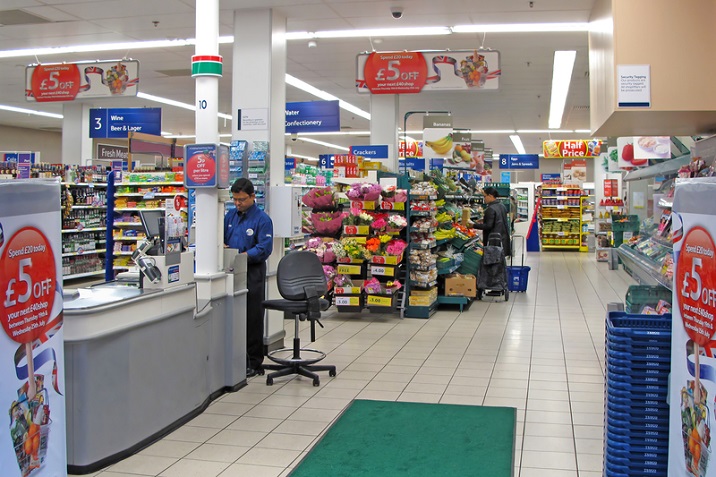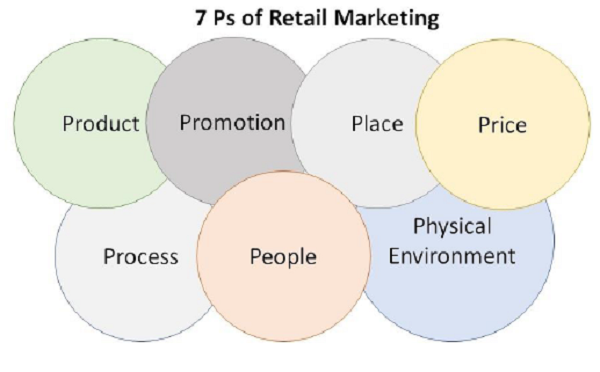
- Retailing - Overview
- Retail Management - Sectors
- Retail Challenges & Theories
- Understanding Retail Consumer
- Inside Retail Management
- Market Segmentation & Strategies
- Retail - Business Location
- Merchandise Management
- Retail - Business Operations
- Retail Management - Space
- Retail Management Resources
- Retail Management - Quick Guide
- Retail Management - Resources
- Retail Management - Discussion
Retail Management - Marketing
Retail marketing is the range of activities the retailer does to create awareness about the products or services among customers for selling.
Retail marketing consists of visual merchandising, sales promotion, advertising, and marketing mix. All these factors are involved in shaping the marketing strategies of retail.
Visual Merchandising
It is the activity of developing floor plans and three-dimensional displays in order to engage customers and boost sales. Both, products or services can be displayed to highlight their features and benefits.
It is based on the idea that good looks pay off. It requires creativity and an eye for presenting the products or services aesthetically so that the customers find it appealing and are motivated towards buying. Visual merchandising involves displaying products or services aesthetically using various objects, colors, shapes, materials, designs, and styles to attract the customers.
Retail Advertising
It is advertising the product or service on communication media. The retailer can advertise on electronic media such as television, radio, mobile, and Internet. Print media such as newspaper, brochures, handbills, product catalogues, are also popular among retailers to publish Ads. Retail advertising enables the retailer to reach out to a large number of people and create awareness among them about the products availability.
The success of an Ad on a particular media depends upon the literacy level of the customers, their age and location.
Sales Promotions
Sales promotion is the communication strategy designed to act directly as an inducement, as added value, or as incentive for the product to the customer. Advertising may create desire to possess the product but sales promotion actually helps conversion to sales.
Sales promotion drives existing customers loyalty, attracts new customers, influences customers buying behavior, and increases sales. It includes the following techniques −
Point of Purchase (POP) Displays
They are Ads placed near the merchandise to promote the sale where the customer makes buying decision.
Point of Sale (POS) Displays
They are Ads placed near the checkout or billing counters to promote on-the-fly purchase that the customer makes at the last minute.

Promotional Prices
Some techniques such as Loss Leading (where irrespective of how luxurious the product is, retailer offers steep discount), Markdown (where retailer brings down the prices for wide range of products in the store), and Bundle Pricing (Buy one get one free or Get 3 pay for 1) are used in promotional pricing.
Loyalty Programs
Retailers conduct loyalty program for the customers who make frequent purchase by offering first access to new products, free coupons, or special discounted price on particular days.
Customer Relationship Management (CRM)
It is identification, satisfaction, and management of customers stated and unstated needs and demands by the retailer for mutual benefit.
It include four prominent phases −
Develop and Customize − Develop products or services to meet customers requirements. Customize the same according to customer segments.
Interact and Deliver − Communicate with existing and prospective customers and deliver the product or service with the added value.
Acquire and Retain − Acquire new customers and retain the loyal ones.
Understand and Differentiate − Understand customers needs, differentiate policies and products depending on customer behavior and preferences.
Elements of Retail Marketing Mix (7Ps)
The retail marketing mix is the combination of marketing activities that the retailers carry out to meet the target markets requirements in the best possible way. Retail marketing mix is a combination of 7 Ps −

Product − The quality and range of variants of the product or service.
Place − It is the location where the product or service is sold: online, type of store, location of store, time taken and the mode of transport to reach the retail place.
Price − Cost of product or service for different customer segments by considering various price affecting factors.
Promotion − It is raising customers awareness about the product or service and driving customers to buy the products by offering tempting deals.
People − This includes internal stakeholders such as customers, sales staff, management staff, and external stakeholders such as suppliers and supply chain management force.
Process − It is the range of activities involved in manufacturing and delivering the product or service to the customer.
Physical Environment − Presenting the products or offering services in a wellorganized and attractive manner, keeping an aesthetic sense in presentation to elevate customers shopping experience.
Retail Communication
Retailers communicate with the customers about their products or services, new product updates, and upcoming events regarding retail business via print, audio, video, or Internet media. Retail communication involves the following strategies −
Providing retail information based on stored data about celebration dates of the customers.
Holding contests to gain new customers and keep existing ones.
Posting retail information on social websites to increase followers.
Sending coupons on mobile so that customers can avail the benefits of the schemes right when they enter the store.
Conducting customer surveys and reviews. Rewarding participating customers.
Using automated retail communication.